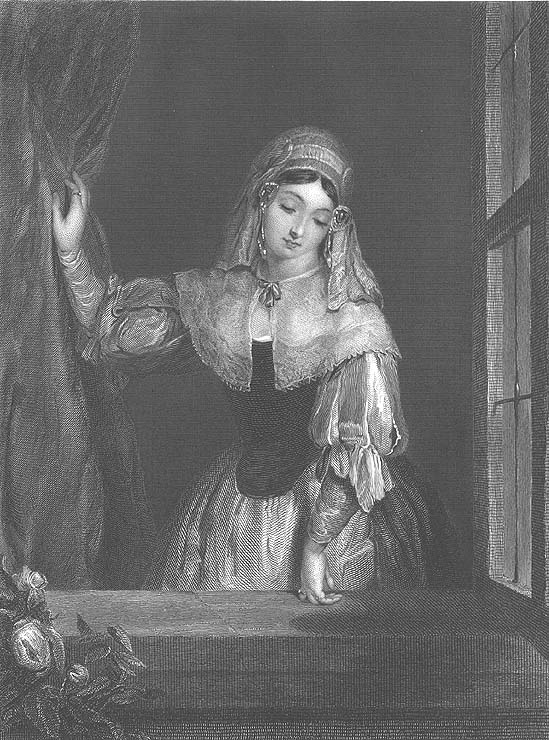
We pack properly to protect your item!
BIOGRAPHY OF ARTIST: Gilbert Stuart Newton (born Halifax, NS, 20 Sept 1794; died London, 5 Aug 1835) was an English painter. His father was British, and Newton grew up in Massachusetts, where he began his art training with his uncle, Gilbert Stuart. In 1817 he travelled to Italy, then visited Paris, where he met C. R. Leslie. The artists became close friends and travelled to Brussels and Antwerp before settling in London and attending the Royal Academy Schools. Newton exhibited at the RA from 1818. His earliest works were mainly portraits, and sitters included the author Washington Irving (1820; Tarrytown, NY, Sunnyside) and the first American Consul in Liverpool James Maury (c. 1825; Liverpool, Walker A.G.). In 1824 he painted Sir Walter Scott at Abbotsford (versions, London, V&A, and Edinburgh, N.P.G.). Newton's most successful works were anecdotal scenes of literary subjects, which became widely known through engravings. These include Oliver Goldsmith's The Vicar of Wakefield Reconciling his Wife to Olivia (exh. RA 1828; London, V&A), Lawrence Sterne's Yorick and Grisette (exh. RA 1830; London, Tate) and Shakespeare's Portia and Bassanio (1831; London, V&A), charming examples of a genre popular in the 1820s and 1830s, which were invariably praised for their colouring. A sociable member of London's artistic community, Newton was elected an ARA in 1828 and Academician in 1832. Also in 1832 he visited the USA, where he showed signs of the mental illness that was to cloud his last years. He was confined to a private asylum in Chelsea, where he made a number of pencil sketches of Shakespearian subjects.
Please note: the terms used in our auctions for engraving, etching, lithograph, plate, photogravure etc. are ALL prints on paper, and NOT blocks of steel or wood or any other material. "ENGRAVINGS", the term commonly used for these paper prints, were the most common method in the 1700s and 1800s for illustrating old books, and these paper prints or "engravings" were created by the intaglio process of etching the negative of the image into a block of steel, copper, wood etc, and then when inked and pressed onto paper, a print image was created. These prints or engravings were usually inserted into books, although many were also printed and issued as loose stand alone lithographs. They often had a tissue guard or onion skin frontis to protect them from transferring their ink to the opposite page and were usually on much thicker quality woven rag stock paper than the regular prints. So this auction is for an antique paper print(s), probably from an old book, of very high quality and usually on very thick rag stock paper.
|